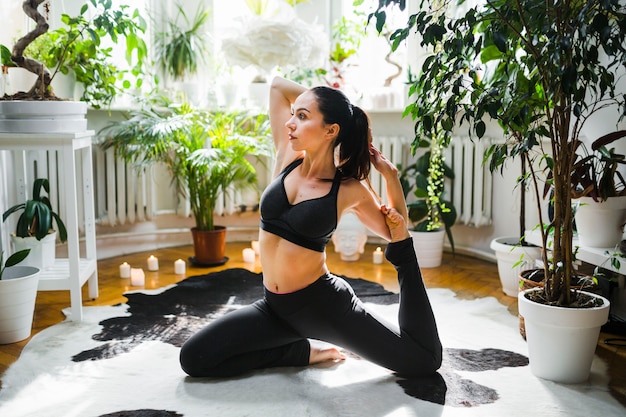
A yoga routine isn’t just about being flexible; it can also boost your memory, improve heart health, and strengthen your bones, according to Anna Magee. In the UK, spending on yoga classes and equipment has soared to £790 million annually as people’s fascination with yoga grows.
While some yoga trends, like rage yoga or yoga on paddle-boards, keep getting wilder, science is continually validating yoga’s benefits. UCLA researchers discovered that a three-month yoga and meditation course did more for reducing age-related brain decline than memory exercises. Another study found it helped breast cancer survivors sleep better.
Lucy Edge, a 53-year-old former advertising executive, turned to yoga during a severe depression instead of taking prescribed anti-depressants. After six months in India learning yoga, she returned feeling happier and more content, despite not achieving the “yoga goddess” body. She’s now an author of three books on yoga and started Yoga Meds, a resource listing over 300 clinical trials on yoga’s benefits.
Yoga can significantly benefit your health, such as enhancing memory. A UCLA study compared brain scans and memory tests of adults over 55 who engaged in either memory exercises or a 12-week yoga and meditation course. The yoga group showed better spatial and visual memory improvements, reduced depression and anxiety, and increased stress resilience. This suggests more research is needed into yoga and meditation for heart and brain health as we age.
Instead of spending hours in strenuous yoga poses, the study participants practiced Kundalini yoga, which combines gentle movements, breathing techniques, meditation, and some chanting. They also did 20 minutes of daily Kirtan Kriya meditation, involving chanting, hand movements, and visualizations.
Yoga also holds promise for heart health. A systematic review in the European Journal of Preventative Cardiology found that yoga might reduce heart disease risk as effectively as conventional activities like brisk walking. Yoga helps reduce stress, a significant contributor to heart disease, by lowering stress hormones that can lead to high blood pressure and heart rate.
Restorative yoga, recommended by senior teacher Anna Ashby, is another way to reduce stress. It involves supported postures held for several minutes, which helps calm the nervous system. Musculoskeletal physiotherapist and yoga teacher Sarah Shone integrated yoga into a rehabilitation program for back pain, with 87% of participants reporting pain reduction.
The National Institute of Clinical Excellence (NICE) endorses yoga for lower back pain and other conditions. Yoga strengthens the muscles of the pelvic floor and those bearing weight, which can boost bone density. It is adaptable, making it accessible for different health conditions.
For beginners, styles like Hatha or Iyengar are recommended as they are gentler. Discuss any health issues with your yoga instructor, and consult your doctor to see if subsidized yoga classes are available for specific conditions.
Good yoga equipment, like a quality yoga mat, is essential. Consider where you’ll keep it, its weight and portability, your height, and its thickness to protect your joints. Valka Yoga’s Elephant Cork Yoga mat, for example, is a great, eco-friendly option that’s both durable and comfortable.
Don’t worry about flexibility—yoga will help improve it over time. Beginners might try Yin or Restorative yoga, typically done with supportive props under dim lighting. Energetic Vinyasa Flow classes link movements with breath, while Iyengar yoga focuses on precise postures with props. Anusara yoga combines alignment with flowing movements, and Yoga Therapy is tailored for those healing from injury or illness.
Different styles suit different needs, so experiment to find what works best for you.




